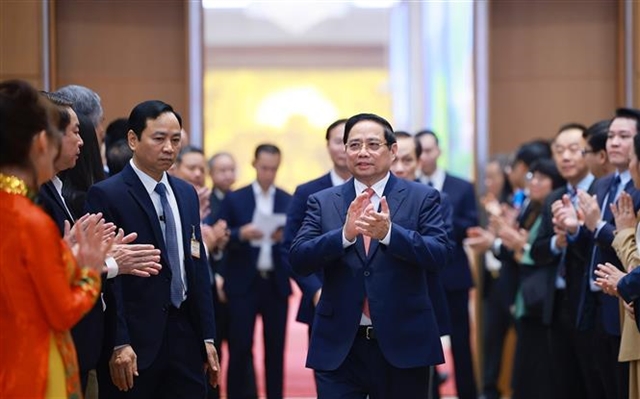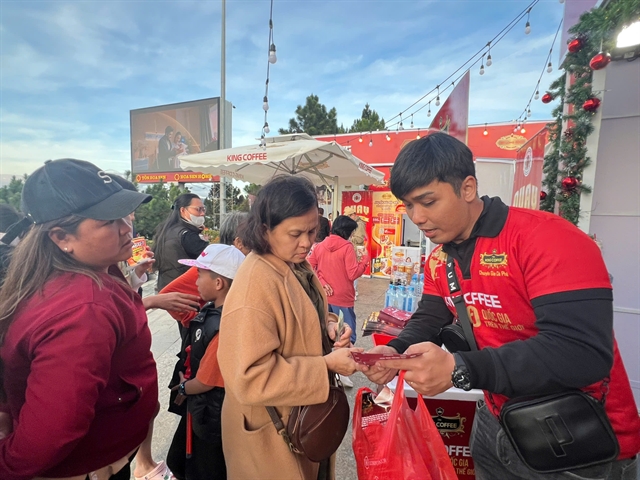 Environment
Environment
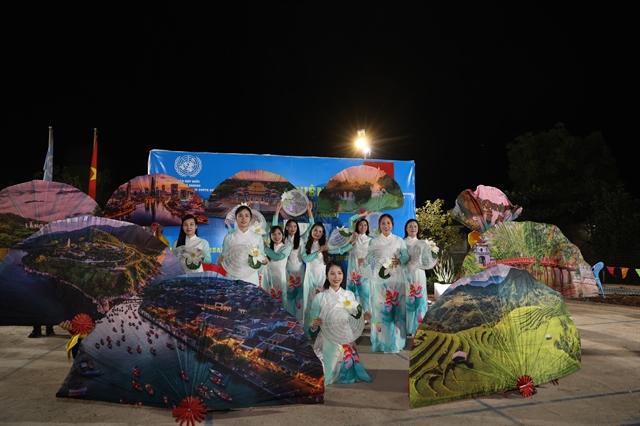
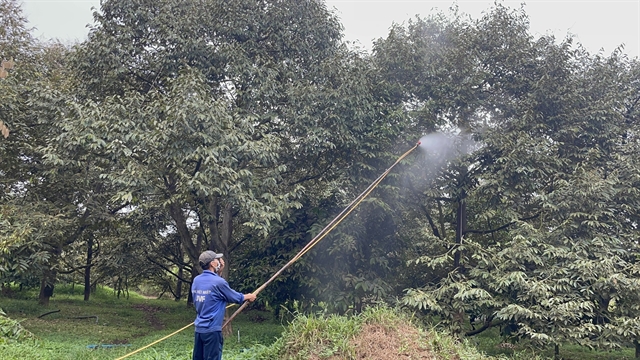 |
| A farmer washes leaves covered by red dust in his garden in Đồng Nai Province. — Photo danviet.vn |
ĐỒNG NAI — Farmers in the southern province of Đồng Nai are facing the risks of a failed harvest due to red dust pollution from the construction site of the mega project Long Thành International Airport.
The adverse effects of this pollution are felt keenly in the region, and the relevant authorities must take necessary measures to protect the livelihoods of the local farmers and prevent further environmental degradation.
Despite relatively favourable weather conditions this year, with hopes of a fruitful crop of rambutan and mangosteen, farmers in Long Thanh District are grappling with the aftermath of the red dust.
According to farmers in Binh Son Commune, Long Thanh District, the red dust from the airport construction site has become pervasive in recent months, spreading heavily to nearby areas of fruit trees and residential areas since February, just as the rambutan and mangosteen trees began to bloom and bear fruit.
The dust has stuck to the leaves, and the hot weather has made it difficult for the trees to photosynthesize, resulting in nutrient deficiency, wilting, fruit dropping, and a failed harvest.
Phạm Quốc Trọng, who owns more than three hectares of durian trees in Bình Sơn Commune, said that in previous years, most of his durians weighed over two kilogrammes by this time of the year.
However, due to the impact of the red dust, the trees have not developed properly.
So far, more than half of the durians in his garden have fallen off the trees.
Trọng estimates that if he can salvage the remaining fruits, he can still harvest over 30 tonnes from his three-hectare garden this year. The garden usually brings him 65 tons of fruits.
However, if the red dust problem remains unsolved, he may have to give up the remaining fruit to save the trees.
Trọng said during the peak of the hot weather, dust from the construction site of Long Thành Airport was carried by swirling winds that constantly deposited the dust on trees. Although he and other farmers tried to wash the trees, it was impossible to clean them completely. This has caused significant damage to the trees.
Trọng said he had to wake up at 2am every day and work until 8am spraying and washing the leaves to salvage the remaining fruits. This not only consumes a lot of water and electricity but also requires a lot of labour.
"Although I know it's not effective, I have no other choice," he said. I have to go to the garden every day and try to save what's left."
Other crops, such as jackfruit, lychee, and banana in Long Thành District, are also being affected by red dust pollution.
At the garden of Nguyễn Văn Thiết, another farmer in Bình Sơn Commune, all fruit trees such as bananas, jackfruit, sapodilla, and lychee have been covered with red dust on their leaves.
The clusters of lychee flowers are unable to produce fruit due to the dry dust, causing much trouble for the farmer.
Thiết said his fruit garden is adjacent to the Long Thành Airport construction site, so the red dust has made it difficult for lychee and rambutan trees to bear fruit.
He said this is a common problem for farmers in this area, adding that he hoped the construction unit would try to resolve the situation as soon as possible.
Hoàng Văn Hùng, Chairman of the Farmers' Association of Bình Sơn Commune, said the local authority has conducted surveys, recorded and reported to higher levels and the Airport Project Management Board of the Long Thành Airport to assist people in calculating the damages caused by the red dust.
Additionally, the unit will work with functional departments of the district to continue monitoring the actual situation to assess the damages related to crops and livestock for the future support of local farmers.
Lê Văn Tiếp, Chairman of the People's Committee of Long Thành District, said the committee had received feedback from the people.
The committee’s Office of Economy will collaborate with officers of the provincial Department of Agriculture and Rural Development to inspect and record the situation to develop a proper plan.
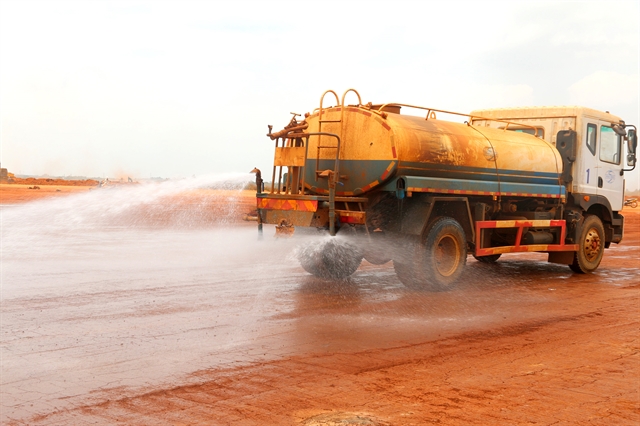 |
| A truck sprays the ground of the Long Thành International Airport construction site to reduce red dust. — VNA/VNS Photo Công Phong |
On April 5, the Ministry of Natural Resources and Environment inspection team announced their inspection results in compliance with environmental protection laws by the Airports Corporation of Vietnam (ACV) during the construction of Long Thành Airport.
The inspection found that the process of constructing the airport caused red dust to spread far and wide, affecting many communes and towns in Long Thành District.
The dust was due to ACV's failure to adequately water certain locations, as specified in the approved environmental impact assessment report.
During the construction process, ACV filled in over 2,500 hectares of land, stripping away the entire surface layer of organic soil and leaving the uncovered soil exposed. The large number of vehicles moving continuously at high speeds also contributed to the dust problem.
In addition, unfavourable weather conditions, such as the current dry season creating whirlwinds, lifted a lot of dust into the air and caused it to spread to the surrounding areas.
The team has requested ACV to water the transportation routes more frequently, install speed limit signs, and strictly control the use of uncovered soil transport vehicles. They must also tightly pack the filled areas and surplus excavation landfills to reduce dust caused by whirlwinds. — VNS



